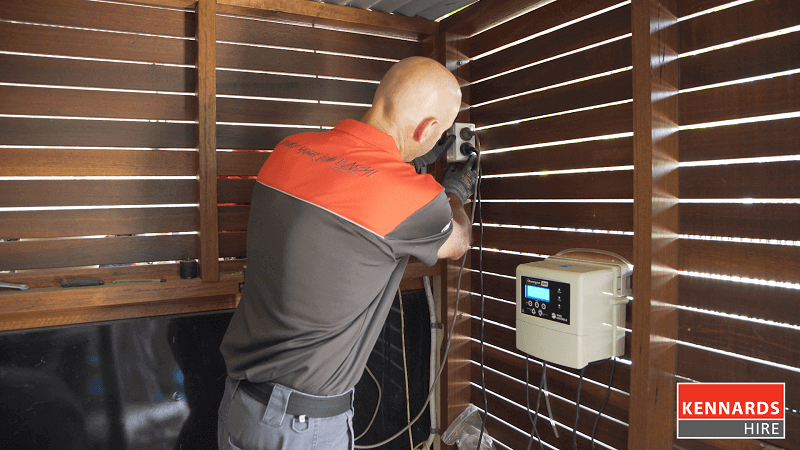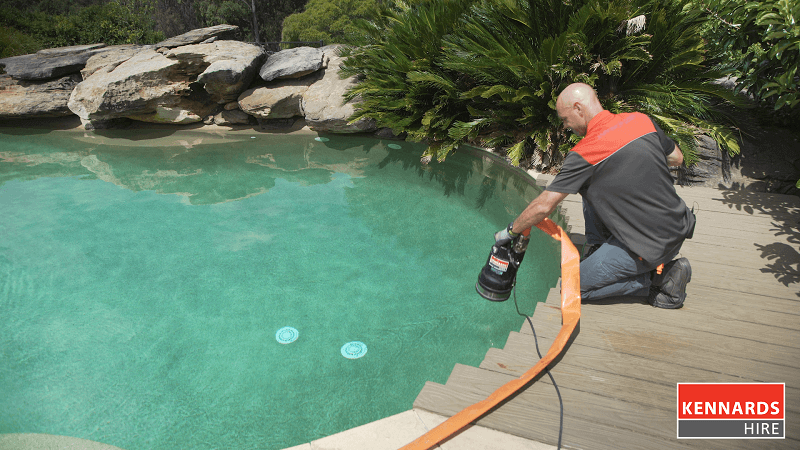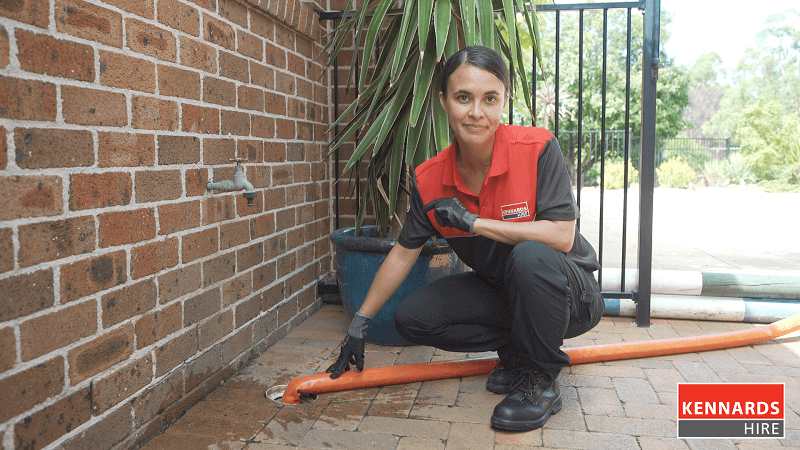How to Use a Small Pump
How-To
This step-by-step guide to using small pumps helps you do it quickly and safely. Keep in mind that although we are using the example of draining a pool, the equipment and methods described here can also be applied in any flooded area, such as a basement room, or a low-lying driveway or garage.
If you have any questions about our equipment or need advice on the best equipment to use, the team at your local Kennards Hire branch will be able to help you.
Steps
Step 1 - Preparation before draining
Before draining a pool or flooded area, you need to know where you can safely discharge the water. In most cases, this will be into a storm water drain system. But a massive volume of water could cause problems with flooding that may affect your neighbours. Contact your local council to make sure you comply with regulations on discharging water.
If you're draining a pool, the next step is to turn off the pool pump and any electrical devices associated with it to reduce the risk of electrocution.
If you have an inground pool, check if it has a hydrostatic valve. This is in the bottom of the pool, usually at the deepest point. The hydrostatic valve prevents ground water pressure beneath the pool from pushing the pool up, especially after heavy rain. It does this by allowing some ground water to enter the pool, thereby neutralising the external pressure.
When you remove the massive weight of the pool water, the ground water pressure can push the pool up out of the ground, causing major damage. To make sure this pressure is neutralised as you remove the water, the hydrostatic valve must be opened and remain open as you drain the pool and until it is full again.

Step 2 - Positioning the pump
The best pump to drain pools is a submersible type known as a 'puddle sucker’ because it can remove water down to a depth of 3mm, and has a rubber base to protect pool surfaces.
Once you have decided where the water discharge point is, connect the discharge hose to the pump and run it out to the discharge point. Next, connect the pump to the electricity supply. Make sure you use one equipped with a working ground-fault circuit interrupter. If you use extension cables, make sure their connection points are kept well away from water.
The pump needs to be placed in the deepest part of the pool to function properly. You will find it comes with a rope or cable to lower it into position. Do not lower it into position or remove it by its electrical cable.

Step 3 - Draining the pool
Once the pump is in position, turn it on. Make sure the water is emptying into the discharge point from the hose as planned.
A puddle sucker can drain about one litre per second, so it takes roughly seven hours to empty a 25,000-litre pool. The bigger the pool, the more time it will take.
There should not be any water backing out of the storm water drain when the pool water is emptying into it. It is recommended you check regularly to make sure the water is emptying smoothly down the drain.
Once the pool is empty, turn the pump off and remove it using the positioning cable.
If you are unsure about any of these steps, you can contact a pool maintenance expert for advice. If you want to know more about how to operate the pump, staff at your local Kennards Hire branch will be happy to advise you.

